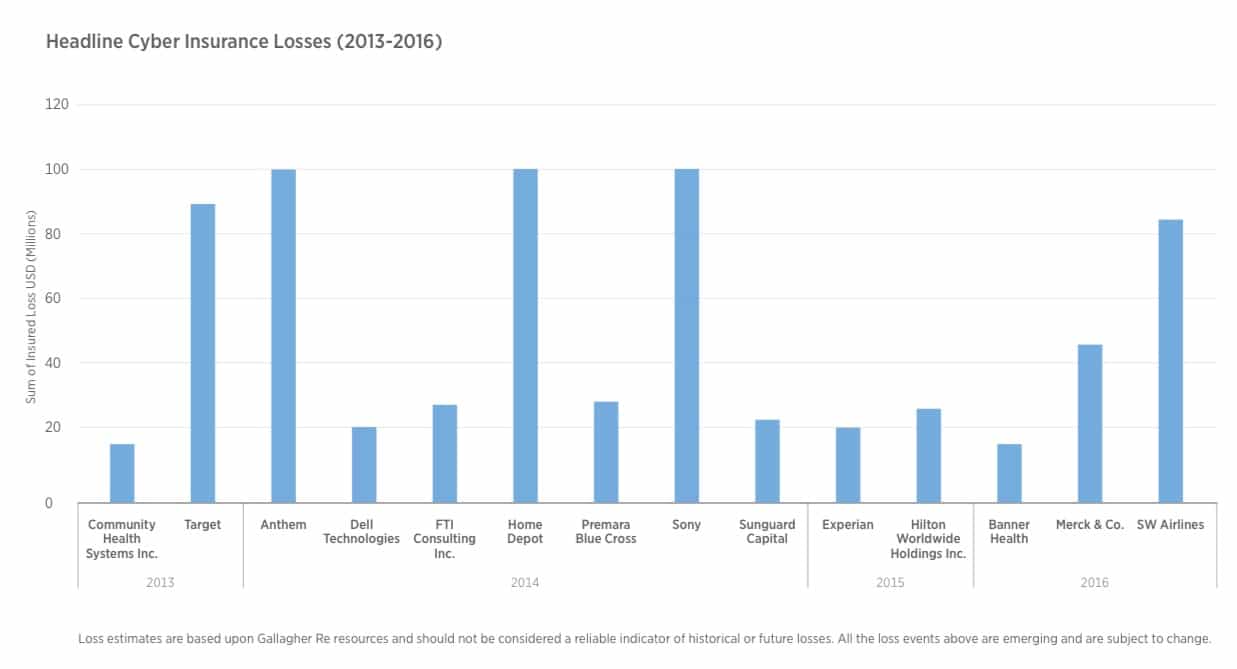Gallagher Re’s latest report, The Quest for Growth, dives into a range of pressing cybersecurity insurance issues, from ransomware and cyber underwriting cycles to the evolving cyber threat landscape. At the center of it all lies a stark reality: the cyber insurance industry is struggling with volatility and major loss events, yet it holds vast, untapped growth potential. According to the report, rising losses have shaken capital confidence, pushing insurers to reassess their models. But Gallagher Re argues this isn’t a cause for retreat; it’s a call to act.
Losses Stack Up, But Demand Isn’t Going Anywhere
Despite multi-billion-dollar claims from events like NotPetya and ongoing ransomware surges, cyber insurance remains underpenetrated. In that case, damages amounted to $10B, insurance covered $3B, and cyber insurance only covered $300M. In the UK, only 6% of micro-businesses have cyber coverage. Gallagher Re calls this a missed opportunity. The report shows that even a catastrophic cyber event would likely increase demand, just as hurricanes fuel home insurance purchases; a clear indicator for cyber insurance growth.

Insurance Cycle Volatility Is Straining the Market
Unlike other insurance lines, cyber cycles are sharper and shorter. Peaks come fast, and downturns cut deep. This volatility stems from a lack of historical data and widespread uncertainty. When losses rise, insurers pull back, premiums spike, and innovation stalls.
Gallagher Re believes this boom-and-bust pattern is avoidable. Instead of cutting coverage post-loss, insurers should evolve strategies to manage systemic risk and maintain consistent capital.
Learning From the Past to Rebuild the Future
The report highlights lessons from past market corrections, including the 2001 post-9/11 hard market and the Class of 2005 reinsurers who thrived by leaning into chaos. Gallagher Re urges the cyber sector to adopt similar bold moves, keep writing coverage during downturns, even at higher prices, and deploy capital strategically.
Stagnation Is a Bigger Threat Than the Hackers
One startling trend? A slowdown in cyber product innovation. When profits come from rate hikes rather than new offerings, insurers lose the incentive to improve. Gallagher Re warns that this stagnation could deter clients, especially SMEs, who already question the value of their policies.
Capital Markets Could Unlock Growth
The report highlights the growing role of capital markets in cyber reinsurance. Gallagher Re’s 144a Cat Bond efforts show that outside capital can inject billions into the market, if structured correctly. The industry must build long-term partnerships to capitalize when the next hard market arrives.
Cyber Threats Are Evolving Too Fast for Complacency
AI-driven attacks, supply chain hacks, and data exfiltration are replacing traditional malware. The rise of tools like WormGPT lowers the skill barrier, letting anyone launch targeted, multilingual cyber attacks. Gallagher Re argues that static pricing and underwriting can’t keep up. Insurers must adapt with more innovative models and tech-driven solutions.
Sustainable Growth Demands Industry-Wide Coordination
The report ends on a hopeful note. Cyber insurance could become a multi-billion-dollar global market, if stakeholders act today. That means aligning capital, improving education, tailoring coverage, and adopting technology to manage risk and drive cyber insurance growth. If these moves are made during soft markets, the industry can emerge stronger, even when the next cyber catastrophe hits.
Finally, we explain it for the 5th graders: Think of cyber insurance like a medieval town with protective walls. Every time a dragon (read: hacker) attacks and burns half the village, town leaders argue whether to rebuild the walls higher or cheaper. Gallagher Re says, “How about both, but also train your guards, store more water, and don’t wait for the next fire!”